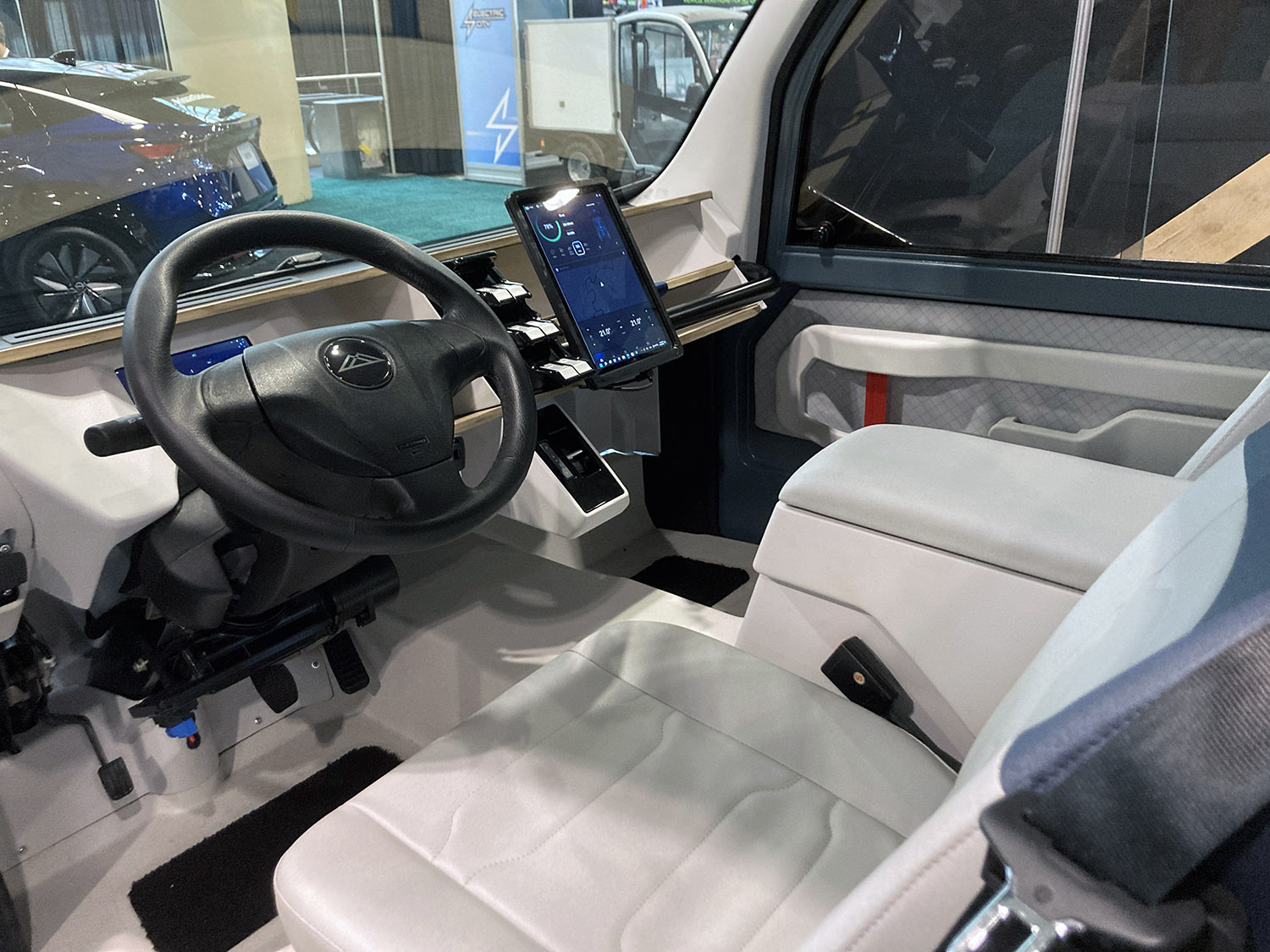With the wide open expanse of wilderness Canada has to offer, it’s no wonder so many of us take to the Great Outdoors in our downtime to relax. But it’s hard to truly be at peace with Mother Nature when we have to use noisy, gasoline-powered off-roaders to get there. One startup company based in New Brunswick is looking to change that.
Potential Motors is displaying its off-road concept, the Adventure 1, at the Canadian International Auto Show in Toronto. This diminutive, all-electric camper may look too small for comfort for some, but its size is part of the appeal, says the company’s co-founder and CEO, Sam Poirier.

Potential Motors’ Adventure 1 at the 2023 Canadian International Auto Show
“This is similar to a UTV, or side-by-side, in scale, so it’s very narrow. It’s actually sixty four inches in width, which means you can take this down all kinds of trails that you wouldn’t typically be able to make it down with other vehicles.
“We kept hearing from different people that they’re looking for something that could get them down some narrow or harder to reach type places,” continues Poirier. “The other side of it is that all vehicles built for this type of adventure have gas combustion engines. So it kind of goes against what you’re trying to do when you’re out in nature or exploration.”
Its small size also hides some useful design features. A slide-out kitchen in the back will take care of hungry campers, while a ladder built right into the side bodywork allows easy access to a roof carrier. Its cab-over architecture allows a driver to easily see the terrain right under the front wheels, and the rear and side doors open upwards, offering protection from the rain or sun (or, let’s face it, the snow). It also carries up to 40 gallons of fresh water.
Also belied by the tiny package is its giant power: two motors combine for all-wheel drive and put out 350 hp and 737 lb-ft of torque. A 63 kWh battery pack offers up to 160 km of off-road range. “That’s really a target that we have with it,” says Poirier. “And that’s based on talking with some of the more advanced off-roaders, they’re maybe going 100 kilometers tops.” And with the battery and motors mounted low in the chassis, it has more stability than its tall stature conveys.

Potential Motors’ Adventure 1 at the 2023 Canadian International Auto Show
One very advanced feature is also found under the Adventure 1’s bodywork. “One of the things that really sets ourselves apart from other off-roaders is this technology that was built into the suspension,” says Poirier. “Other off-roaders have reactive suspension, this is proactive.” With front-mounted cameras, it can ‘see’ the upcoming terrain and adjust the dampers and traction controls accordingly.
The concept on the auto show floor is just for display; the company also has another prototype without a body that’s used for mechanical testing. Potential Motors plans to start production in around two years, building about 100 annually, all fully customizable at a yet-to-be-determined facility in North America.
And at first blush, the sticker price of US$136,000 sounds pretty steep for outdoorspeople, considering you can buy a new UTV for around $35,000 here in Canada. But Poirier points out the Adventure 1 is more than just an off-roader; the key is, weighing roughly 3,970 lbs, it can be towed by a passenger vehicle and used like a camper trailer, then unhooked at a trailhead to continue on where a regular vehicle can’t.
“This is really meant for that person who wants something that takes them places they wouldn’t be able to go with other vehicles,” says Poirer. “So we’d see somebody getting this instead of getting maybe an Airstream or something behind them.

Potential Motors’ Adventure 1 at the 2023 Canadian International Auto Show
“And those smaller tow-behind trailers that are becoming very popular now have less space than what you have inside here. So, the idea with this is that it has all those capabilities, and then you can actually drive it out farther off-road. It can be flat-towed behind a vehicle. It can extend that adventure.”
Poirier says that, while the Adventure 1 is strictly an off-roader, it’s built with automotive intent in mind, in terms of structure, rigidity and safety. So does that mean there will be other offshoots meant for the tarmac as well as the dirt? Poirier laughs.
“Stay tuned,” he says with a wink. “You’ll see some cool stuff.”






